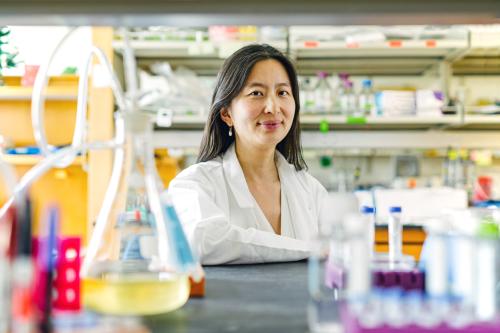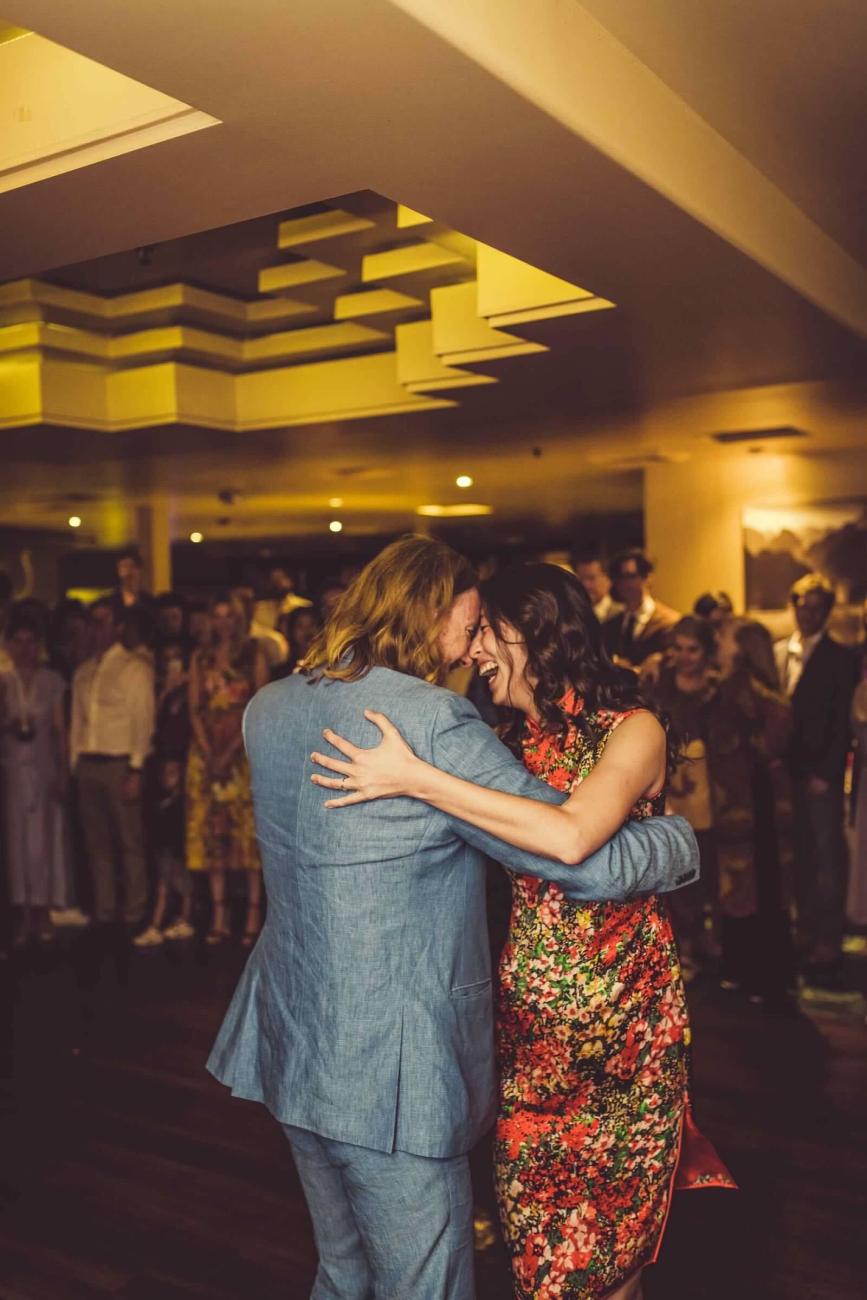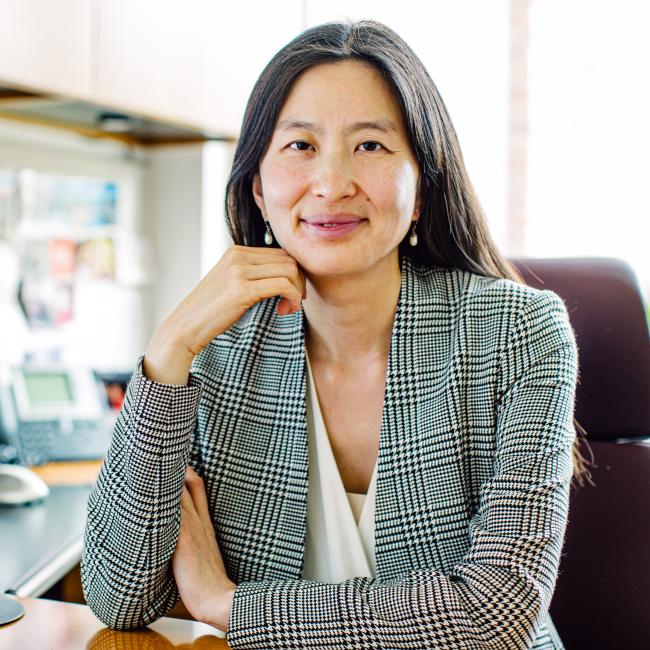
Member Spotlight: How Melody Li's grandmother and a 90s movie inspired her to become a virologist
Meet Melody Li, PhD, a virologist who studies host-cell interactions of mosquito-borne RNA viruses. Here, she talks about how her research pivoted to COVID-19 during the height of the pandemic, why the 2003 SARS outbreak solidified her desire to become a scientist, and her love of dancing and off-trail hiking.
Li is an assistant professor of microbiology, immunology and molecular genetics in the UCLA College, a member of the Eli and Edythe Broad Center of Regenerative Medicine and Stem Cell Research at UCLA and a member of the UCLA Basic, Translational and Clinical Research COVID-19 Task Force.
Tell us about your research.
Our lab studies the immune system and why certain viruses are more resistant to the body’s antiviral response than others. We focus on alphaviruses and flaviviruses, which are both RNA viruses transmitted to humans primarily by mosquitos. Our ultimate goal is to shed light on the cellular mechanisms that play a role in various host-virus interactions, which could lead to the development of vaccines and drugs that are effective against a wide range of viruses.
At the height of the COVID-19 pandemic, our research team also received a grant to study the effects of long COVID. We’re investigating whether long COVID could be caused by lingering fragments of the SARS-CoV-2 virus that might remain even after the body has cleared the virus—triggering an overactive immune response. If this hypothesis is shown to be correct, we hope to identify therapies for patients who are suffering from this relatively new and often debilitating syndrome.
How has being a UCLA Broad Stem Cell Research Center member helped you as a scientist?
The stem cell community here is a big part of why I came to UCLA. I’ve been collaborating with April Pyle, who has been a wonderful mentor to myself and other junior faculty, and together we received an Innovation Award from the Center to study the blood-brain barrier.
The blood-brain barrier is made up of many cell types and acts as a roadblock to keep harmful substances like bacteria, viruses or fungi from reaching the brain. By using a stem cell-derived blood-brain barrier cell culture system developed by external collaborators, we’re investigating the molecular characteristics of alphaviruses that allow them to attack the brain, as well as the host immune response at the blood-brain barrier interface to identify new genes that would protect the host from neuroinvasive virus infections.
I wouldn’t be able to do any of this work without funding from the Center. I also can’t downplay the fact that just being a part of this community encourages me to be braver with my research by venturing into all these different stem cell-based directions.
Have you always wanted to be a scientist?
When I saw the movie “Outbreak” as a kid, I was inspired by the fact that there was a courageous female scientist who was working to save the world from a deadly virus. I decided then that I wanted to save the world too by becoming a scientist—specifically a virologist.
This desire only solidified after the 2003 SARS epidemic. At the time, I was in college at UC Irvine while the rest of my family was in Hong Kong, the epicenter of the outbreak. There was a positive case in my grandmother’s building, and we were all so scared because SARS had a fatality rate of more than 50% for the elderly. I felt so far away and so helpless. The whole experience inspired me to take the steps to actualize my childhood dream of being a virologist. I started working in the lab of Bert Semler, a well-known polio virologist. That’s where I got my start studying host-virus interactions, and that’s still my research focus today.
What motivates you to pursue your research?
I learned to love incremental progress. You have to when you’re in research because experiments fail 99% of the time. I started to enjoy little successes like running a PCR and getting a really beautiful gel. After I developed this mindset, there was something every day I could do to find joy in my work.
Now as a PI running my own lab, I enjoy these little triumphs through my students and postdocs. I love seeing them design an experiment and execute each step well. Even if the outcome is negative, or our hypothesis is completely wrong, I tell them that we’re making progress because we’ve gained new insight. These moments with my mentees keep me excited.
Where and when are you the happiest?
In the lab, I’m happiest when I’m watching my students learn and grow as scientists and humans. I love seeing when concepts click for them. It’s especially rewarding when my trainees read a newly published paper and they come tell me how they thought of all these ways to connect the research back to their own projects. In those moments, I’m able to take a step back and go, “My job, today, is well done.”
Outside of the lab, I enjoy backpacking and off-trail hiking. Of a five-hour hike, four hours would be spent bushwhacking through forests and densely vegetated areas. It’s actually a lot of suffering—losing fingernails, getting bee stings and running into huge rattlesnakes. Each excursion is equal parts terrifying and exciting, but ultimately, these trips help me be present. I’m sure others can relate, but I have a long to-do list in my head and I’m always thinking about what comes next. Being in nature in a somewhat chaotic capacity—seeing how vast and beautiful the world is and realizing how small I am—forces me to be in the moment, to be grounded. That makes me happy.

What’s something most people might not know about you?
I love to dance! I like all kinds of dances, but I particularly enjoy Latin dances like the salsa, bachata and merengue… I used to take tango lessons as a graduate student. In fact, my husband and I performed a choreographed tango at our wedding. It was so stressful dancing in front of an audience, but it was fun in the moment and is now a great memory.

